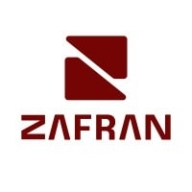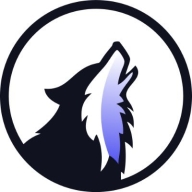


Tenable Nessus and Vicarius vRx are prominent competitors in vulnerability management. Tenable Nessus holds an upper hand due to its extensive feature set and cost-effectiveness for larger enterprises.
Features: Tenable Nessus offers automated vulnerability detection, extensive database integrations, and predictive prioritization. Vicarius vRx provides unique patchless protection, automation features, and efficient patch deployment for third-party applications.
Room for Improvement: Tenable Nessus could improve in reporting, user interface, and extend support for scanning beyond basic network devices. Vicarius vRx can enhance network scanning, simplify reporting processes, and improve application management.
Ease of Deployment and Customer Service: Tenable Nessus offers on-premises and hybrid cloud deployments, with generally reliable customer service but some reported delays. Vicarius vRx uses public cloud deployment, which simplifies setup, supported by effective and responsive customer service.
Pricing and ROI: Tenable Nessus is cost-effective with subscription pricing for unlimited IP scanning, providing strong ROI by preventing security breaches. Vicarius vRx utilizes a per-asset pricing model, which is scalable but may appear more expensive.



Zafran Security integrates with existing security tools to identify and mitigate vulnerabilities effectively, proving that most critical vulnerabilities are not exploitable, optimizing threat management.
Zafran Security introduces an innovative operating model for managing security threats and vulnerabilities. By leveraging the threat exposure management platform, it pinpoints and prioritizes exploitable vulnerabilities, reducing risk through immediate remediation. This platform enhances your hybrid cloud security by normalizing vulnerability signals and integrating specific IT context data, such as CVE runtime presence and internet asset reachability, into its analysis. No longer reliant on patch windows, Zafran Security allows you to manage risks actively.
What are the key features of Zafran Security?
What benefits can users expect from Zafran Security?
In industries where security is paramount, such as finance and healthcare, Zafran Security provides invaluable protection by ensuring that only exploitable vulnerabilities are addressed. It allows entities to maintain robust security measures while allocating resources efficiently, fitting seamlessly into existing security strategies.
Tenable Nessus provides an efficient vulnerability management system with swift deployment and comprehensive scanning capabilities, making it an ideal choice for organizations seeking to enhance their security posture through effective threat detection and mitigation strategies.
Renowned for its top-tier vulnerability detection, Tenable Nessus offers a robust platform that integrates effortlessly across systems, enhancing threat management through automation, real-time monitoring, and customizable scanning options. Its broad asset coverage, including network devices and applications, coupled with ease of deployment, positions it as a go-to option for risk assessment and compliance. Organizations value its extensive reporting features and database, although they suggest enhancements in reporting formats and false positive detection. A more intuitive interface, improved cloud support, and competitive pricing models are sought after to cater to evolving enterprise needs.
What are the key features of Tenable Nessus?In industries such as finance, healthcare, and tech, Tenable Nessus is implemented for scanning internal and external networks, identifying risks, and ensuring data protection compliance. Organizations conduct regular scans to detect security vulnerabilities in servers and databases, leveraging its capabilities to strengthen their security frameworks while managing cloud infrastructures and enterprise networks efficiently.
Vicarius vRx supports managed service providers and partners with compliance packages, vulnerability management, and patching for PCI, HIPAA, and cybersecurity needs, focusing on third-party and OS patching, especially on Microsoft Windows.
Vicarius vRx automates patching, virtualized patching, and severity prioritization through its cloud-based, agent-based approach which enhances consistency and flexibility. It includes patchless protection to block malware in unpatched software and features simplified dashboards for integrated vulnerability discovery and remediation. Users appreciate the user-friendly scripting engine, efficient third-party software patching, and real-time cybersecurity updates. Community support and customizable deployment options further add value. However, users find name changes and login difficulties confusing and report tediousness when configuring multiple reports. Desired improvements include virtual environment for patch testing, enhanced network device vulnerability scans, and better Microsoft Endpoint Manager interactions.
What are the key features of Vicarius vRx?Among managed service providers, Vicarius vRx is implemented for updating systems, showing capabilities to customers in lab environments, and securing endpoints through agent-based patching. These providers use vRx to efficiently manage third-party software patching and to maintain cybersecurity standards across industries.
We monitor all Vulnerability Management reviews to prevent fraudulent reviews and keep review quality high. We do not post reviews by company employees or direct competitors. We validate each review for authenticity via cross-reference with LinkedIn, and personal follow-up with the reviewer when necessary.